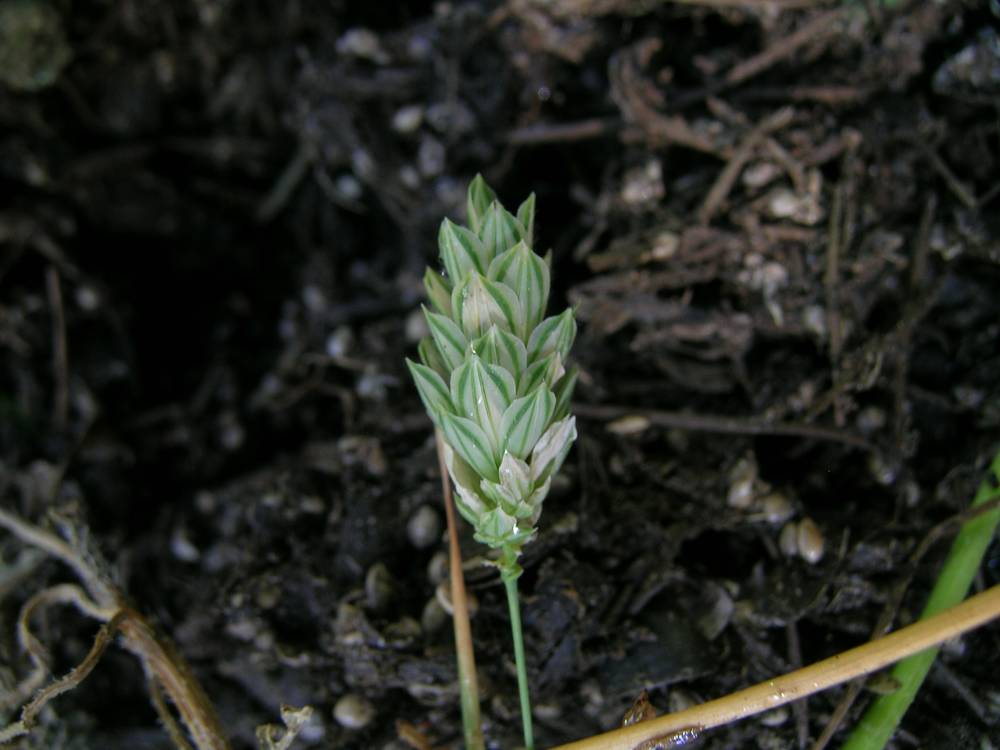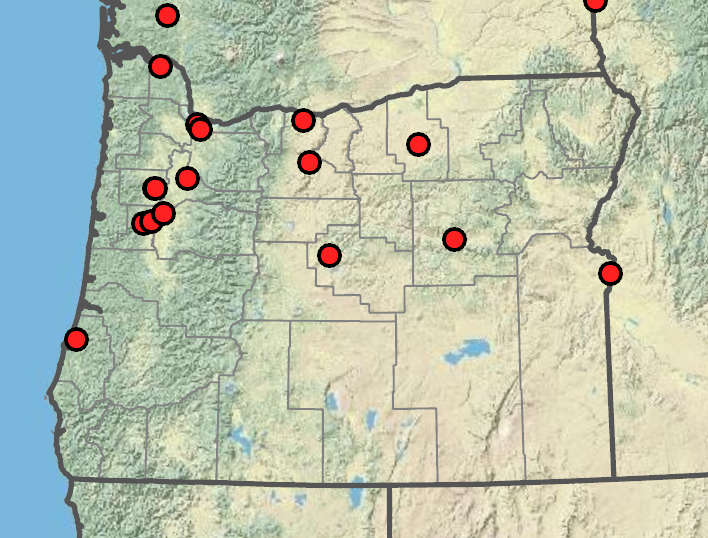Phalaris lemmonii
Phalaris canariensis
annual canarygrass
blades 3–25 cm × 2–10 mm.
ovoid to oblong-ovoid, not lobed, truncate at the base, 1.5–5 × 1.5–2 cm;
spikelets borne singly;
branches not evident;
disarticulation above the glumes.
all alike, 3 florets; lower 2 florets sterile.
7–10 × 2–2.5 mm; smooth, glabrous, sometimes sparsely pilose between the veins;
keels winged;
wings to 0.6 mm wide, widening toward the tip;
lateral veins inconspicuous; smooth;
tips rounded; short-pointed.
lanceolate, 2–4.5 mm, 33% or more the length of the bisexual floret; acute, sparsely pubescent.
4.5– 6.8 mm;
lemmas ovate; straw-colored to gray-brown, densely pubescent; shiny.
2–4 mm.
=12.
Phalaris lemmonii
Phalaris canariensis
Disturbed areas, often around bird feeders. 0–900 m. Col, CR, Est, Lava, Owy, WV. CA, ID, WA; north to Yukon, scattered east throughout the US and southern Canada; nearly worldwide. Exotic.
Phalaris canariensis has larger spikelets than Oregon’s other Phalaris species, with distinctive glumes so widely winged that they are almost semicircular near the tips.
Barbara Wilson, Richard Brainerd, Nick Otting
- Local floras:
BC,
CA,
OR,
WA
- Local Web sites:
CalFlora,
CalPhotos,
Flora NW,
PNW Herbaria
WildflowerSearch
iNaturalist (observations)
USDA Plants Database
- LBJ Wildflower Center
- SEINet
- Plants of the World Online
- Encyclopedia of Life
- Wikipedia
- Google Image Search



